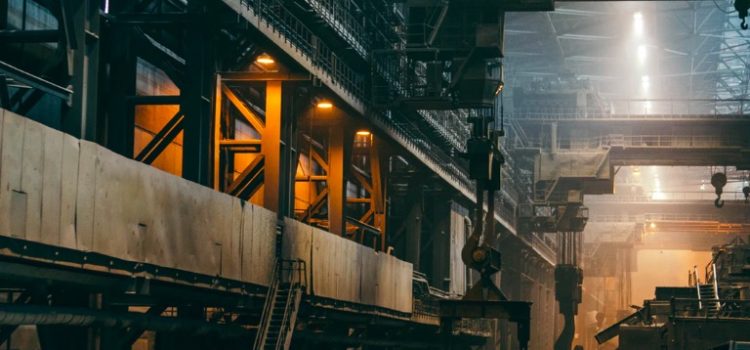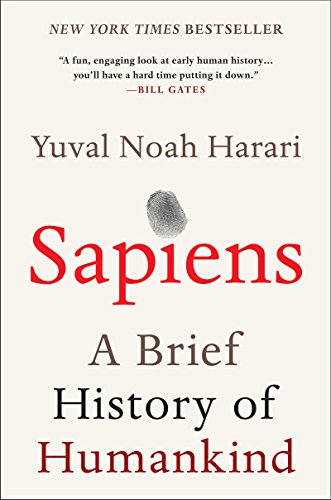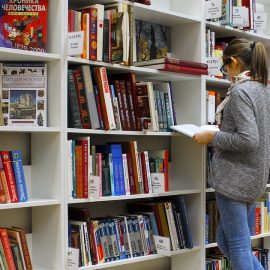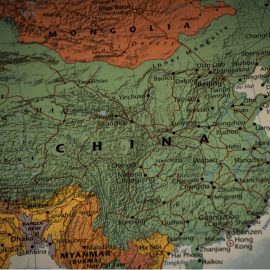

This article is an excerpt from the Shortform summary of "Sapiens: A Brief History of Humankind" by Yuval Noah Harari. Shortform has the world's best summaries of books you should be reading.
Like this article? Sign up for a free trial here .
What caused the Industrial Revolution? How did it shape the modern world?
The causes of the Industrial Revolution were the discovery of energy conversion and development of new resources. The idea that human beings had the capacity to convert matter to energy was a significant cause of the Industrial Revolution.
We’ll cover what caused the Industrial Revolution and how it changed society.
What Caused the Industrial Revolution?
Economic growth requires more than just trust in the future and the willingness of employers to reinvest their capital. It needs resources, the energy and raw materials that go into production. While the economy can grow, our resources remain finite.
At least, that’s what we’ve thought for centuries. But the energy and raw materials that are accessible to us today have increased as a result of the Industrial Revolution. We now have both better ways of exploiting our resources and resources that didn’t exist in the worlds of our ancestors. This change in thinking is part of what caused the Industrial Revolution.
For instance, over 300 years humans built increasingly more advanced vehicles, from carts and wagons to trains, cars, jets, and spaceships. In 1700, the vehicle industry relied almost entirely on wood and iron, so its resources were limited. But since 1700, humans have invented or discovered new materials such as plastic, rubber, aluminum, and titanium. We also have new energy sources. The industry relied on muscle power in 1700, but today factories use petroleum combustion engines and nuclear power stations to manufacture their vehicles.
As long as science keeps making discoveries, our resources are, if not infinite, at least not finite.
The Discovery of Energy Conversion and the Industrial Revolution
Our ancestors were limited in how they could harness and convert energy.
First, they had limited resources. Before the Industrial Revolution, humans burned wood and used wind and water power for energy. But if you didn’t live by a river, if you ran out of trees in your area, or if the wind wasn’t blowing, you were out of luck.
Second, there was no way to convert one type of energy into another. For example, they couldn’t harness the wind and then turn that energy into heat to smelt iron.
The only machine that could convert one type of energy into another was the body. For instance, animals get their energy from plants. Plants get their energy from the sun. Because animals were so efficient at converting food (whose energy originated as solar energy) into movement, muscle power was the main method of production. Humans used their muscles to build carts, oxen used their muscles to plow fields, and horses used their muscles to transport goods.
But the reliance on animal labor led to reliance on plant growth cycles and the sun. This was a problem. When the sun shone and the wheat grew, peasants could harvest, tax collectors could get their money from the peasants, and newly wealthy soldiers and kings started thinking about war. But when the sun didn’t come out in the winter and the wheat didn’t grow, the actions of the whole community came to a standstill.
Breakthroughs in Converting Energy
The discovery of gunpowder introduced the idea that you could convert heat energy to movement, but this was such an odd concept that it took 600 years for gunpowder to be used widely in artillery. Still, this would be part of what caused the Industrial Revolution.
Another 300 years passed before the invention of the steam engine, which also converted heat to movement, through the pressure of steam. After this, the idea of turning one type of energy into another didn’t seem so foreign. People became obsessed with discovering new ways to harness energy. For example, when physicists realized that the atom stores a lot of energy, they quickly devised ways to release it to make electricity (and bombs). The internal combustion engine turned petroleum, previously used to waterproof roofs and lubricate axles, into a liquid that nations fought wars over. Electricity went from being a cheap magic trick to something we use every day and can’t imagine living without. This was the origin of the Industrial Revolution.
The Search for More Energy and Materials
Energy
The Industrial Revolution was really all about finding ways to convert and discover energy sources. Rather than being a limited resource, the energy we have access to just keeps growing. Some people worry that we’re using up all the energy on earth, such as that stored in fossil fuels, but there’s energy all around us if we can only figure out how to harness it.
For example, the sun sends to earth 3,766,800 exajoules of energy every year. For context, human industries and activities consume only 500 exajoules annually, which the sun can provide us in a mere 90 minutes. Other promising sources of energy are nuclear energy and gravitational energy.
Although our sources of energy may be limited, we’re nowhere near reaching those limits.
Raw Materials
Accessing more energy could also help us with the problem of limited raw materials. When we harness energy in new, more efficient ways, or tap into unavailable sources of energy, we have access to more resources. Energy gives us the tools to get to materials we couldn’t access before, like iron mines in Siberia.
Scientific discoveries have also increased our resources. We’ve invented new raw materials like plastic and silicon, and science has also made some previously known resources more accessible. For example, aluminum was discovered in the 1820s, but it was expensive and difficult to separate from its ore. In the 1860s, it was more expensive than gold. It was only when chemists devised a way to extract it cheaply that it could be used widely. Scientific advances were one cause of the Industrial Revolution.
New Resources and Human Productivity
Although we think of the Industrial Revolution as an urban phenomenon, it impacted agriculture first. Tractors replaced muscle power and new fertilizers, insecticides, and hormones increased the productivity of fields and farm animals. Additionally, refrigerators, ships, and airplanes allowed farmers to transport their goods all over the world.
Impact on Animals and Plants
Plants and animals became mechanized, viewed as pieces of the industrial machinery rather than living beings. For instance, still today, most dairy cows live their entire lives in an enclosure so small they can’t turn around. They sit and stand in their urine and feces. They get their food from one machine and get milked by another. Calves are separated from their mothers at birth.
Science has demonstrated that mammals and birds feel pain and experience emotions. Science has also shown that forcing them to live in these unnatural environments is distressing for them. This is an area where we ignore science to uphold the myths that keep capitalistic societies functioning.
Our methods of animal husbandry didn’t stem from our hatred of animals. Our methods stemmed from an economic incentive and indifference toward the suffering of animals. We just don’t think about them.
We’ve shaped our world to fit our needs. In the process, we’ve destroyed habits and many of the species that lived there. We’ve created environments full of the animals most useful to us. If you weighed all the humans on earth today, we’d weigh about 300 million tons. Farm animals like cows, pigs, and chickens would weigh a cumulative 700 million tons, compared with 100 million tons of large wild animals, from porcupines to whales. We’ve prized farm animals at the expense of other species, but some may feel farm animals came off worse in the bargain.
The Move to Cities
The mechanization of plant cultivation and animal husbandry founded our current socio-economic order. In the past, the majority of food produced in fields and farms went to the peasants and animals working them. Peasants made up 90% of the population before the Industrial Revolution. In contrast, today, only 2% of the population earns its money from fields and farms, but that 2% not only feeds the entire U.S. population but also sends its surplus to other countries.
Because fewer people were needed in the fields, more people flooded the cities, and urban production increased. We now produce huge amounts of steel, clothing, and buildings, plus many things previously unimaginable like cell phones and dishwashers. Whereas most Sapiens in history lived with too little or just enough, we now live with an abundance of material goods.
The New Problem: Supply Outstrips Demand
The causes of the Industrial Revolution also brought problems. For most of history, goods were scarce. People lived frugally, and frugality was a virtue. In an odd twist, in the modern era, we have too much stuff. Rather than supply not meeting demand, demand didn’t always meet the supply. We needed buyers.
This prompted the new ethic of consumerism. Frugality became a bad word, and people were taught by industries that consuming was a positive thing. Self-indulgence is “self care” and frugality is “self-oppression.”
Consumerism has changed our values, habits, and health. For instance, we think it’s normal that manufacturers make poor-quality, short-term goods and then invent new models that we don’t need but are told we do. Shopping is a huge part of holidays like Christmas and Memorial Day. In many countries, the poorest, who live on pizza and hamburgers, are more likely to die of obesity rather than starvation. We spend huge amounts of money on food, and then we spend huge amounts of money on diet products, doubly supporting the growing economy.
Consumerism seems to conflict with the capitalist mentality of wasting nothing and reinvesting profits. While the two codes of ethics do conflict, they can inhabit the same space as the “capitalist-consumer ethic” because this combined ethic has different rules for different people. The capitalist-consumer ethic tells the rich to invest and the poor to buy. The rich believe in frugality and investing, and the poor believe in buying and indulging. The rich manage their investments while the poor buy televisions and new phones they don’t need. The spending of the poor supports the wealth accumulation of the rich. Following the capitalist-consumer ethic enables the rich to keep getting richer and the poor to keep getting poorer. This may be an inevitable result of the Industrial Revolution.
———End of Preview———

Like what you just read? Read the rest of the world's best summary of "Sapiens" at Shortform . Learn the book's critical concepts in 20 minutes or less .
Here's what you'll find in our full Sapiens summary :
- How Sapiens outlived and outlasted the 8+ other human-like species on Earth
- The 3 critical revolutions in human existence that led to our domination of the planet
- How much of what powers our world today is really just a shared mass delusion
- What the future of humanity might look like






